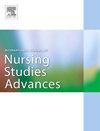Patient safety and the second victim phenomenon in nursing and medical curricula: A qualitative study
IF 3.1
Q1 NURSING
International Journal of Nursing Studies Advances
Pub Date : 2025-08-06
DOI:10.1016/j.ijnsa.2025.100403
引用次数: 0
Abstract
Background
The second victim phenomenon—emotional and psychological distress experienced by healthcare professionals following adverse events—is increasingly recognized. However, its integration into formal nursing and medical curricula remains limited across Europe, despite its relevance to patient safety, as well as student and clinician well-being.
Objectives
To explore how patient safety and second victim content are incorporated into undergraduate and postgraduate nursing and medical curricula and to identify the barriers and facilitators influencing such integration across Europe.
Design
A qualitative cross-national interview study.
Settings
Medical and nursing education institutions in 10 European countries representing northern, southern, central, and eastern regions.
Participants
Nineteen healthcare education leaders (department heads or senior faculty) from nursing and medical programs were selected purposefully based on their leadership roles and curricular oversight responsibilities. Inclusion criteria required at least 5 years of experience in curriculum development at both undergraduate and postgraduate levels; there were no dropouts.
Methods
Semi-structured interviews were conducted in participants' native languages, translated to English, and analyzed using thematic analysis. Themes were developed inductively by a multidisciplinary research team across countries.
Results
Five major themes were identified: (1) Recognition of patient safety and the second victim phenomenon; (2) Curriculum development and implementation; (3) Training content and delivery; (4) Student and educator engagement; and (5) Continuous professional development. Although awareness of the second victim concept was high, formal curricular integration was rare. Barriers included curriculum overload, regulatory rigidity, and limited faculty preparedness. Facilitators included interdisciplinary collaboration, student advocacy, and openness to innovative pedagogies.
Conclusions
Despite broad recognition of the second victim phenomenon, its integration into European healthcare curricula remains minimal. Strategic curriculum reforms supported by interdisciplinary collaboration, institutional leadership, and student engagement may be essential to bridge the gap between awareness and educational practice. We have offered actionable guidance for advancing patient safety and clinician resilience through formal education.
护理和医学课程中的病人安全和第二受害者现象:一项定性研究
第二个受害者现象——医疗保健专业人员在不良事件后经历的情绪和心理困扰——越来越被认识到。然而,在整个欧洲,尽管它与患者安全以及学生和临床医生的福祉相关,但它在正式护理和医学课程中的整合仍然有限。目的探讨如何将患者安全和第二受害者内容纳入本科和研究生护理和医学课程,并确定影响整个欧洲这种整合的障碍和促进因素。设计一项定性的跨国访谈研究。欧洲北部、南部、中部和东部10个国家的医疗和护理教育机构。参与者:根据护理和医学专业的领导角色和课程监督职责,有目的地选择了19名医疗保健教育领导(系主任或高级教员)。申请人须具备至少五年本科及研究生课程发展经验;没有人中途退学。方法采用半结构化访谈,以参与者的母语进行访谈,并将访谈内容翻译成英文,采用主题分析法进行分析。主题是由一个跨国家的多学科研究小组归纳制定的。结果确定了五大主题:(1)对患者安全和二次受害者现象的认识;(2)课程开发与实施;(3)培训内容及授课方式;(4)学生和教育者的参与;(5)持续的专业发展。虽然对第二受害者概念的认识很高,但正式的课程整合很少。障碍包括课程超载、监管僵化和师资准备有限。促进因素包括跨学科合作、学生倡导和对创新教学法的开放态度。结论:尽管第二受害者现象得到了广泛认可,但其纳入欧洲医疗保健课程的程度仍然很小。跨学科合作、机构领导和学生参与支持的战略性课程改革对于弥合意识和教育实践之间的差距至关重要。我们提供了可操作的指导,通过正规教育提高患者安全和临床医生的应变能力。
本文章由计算机程序翻译,如有差异,请以英文原文为准。
求助全文
约1分钟内获得全文
求助全文
来源期刊

International Journal of Nursing Studies Advances
Nursing-General Nursing
CiteScore
5.80
自引率
0.00%
发文量
45
审稿时长
81 days
 求助内容:
求助内容: 应助结果提醒方式:
应助结果提醒方式:


